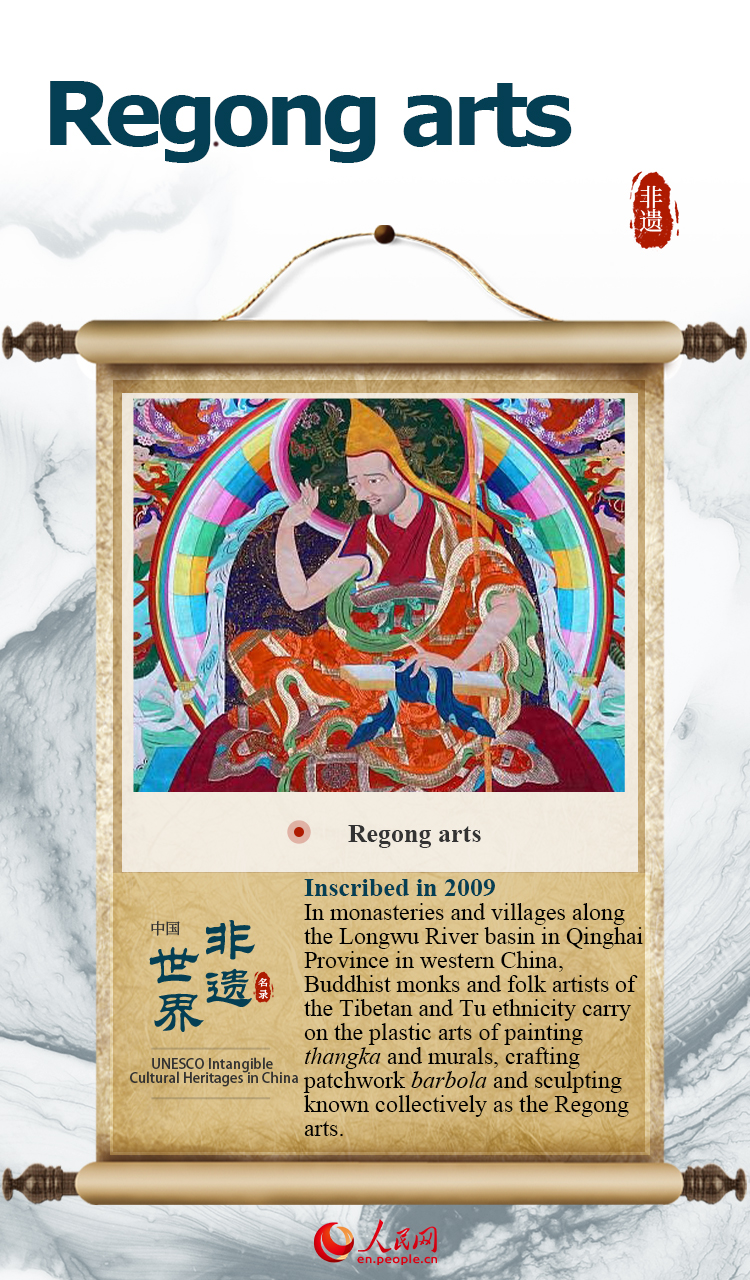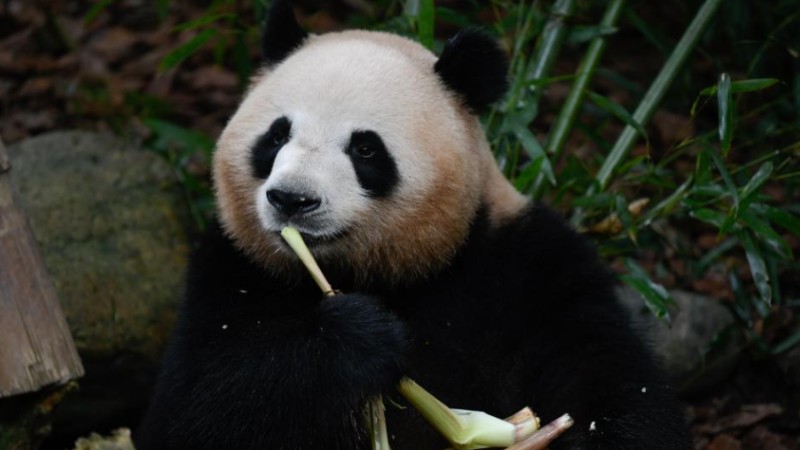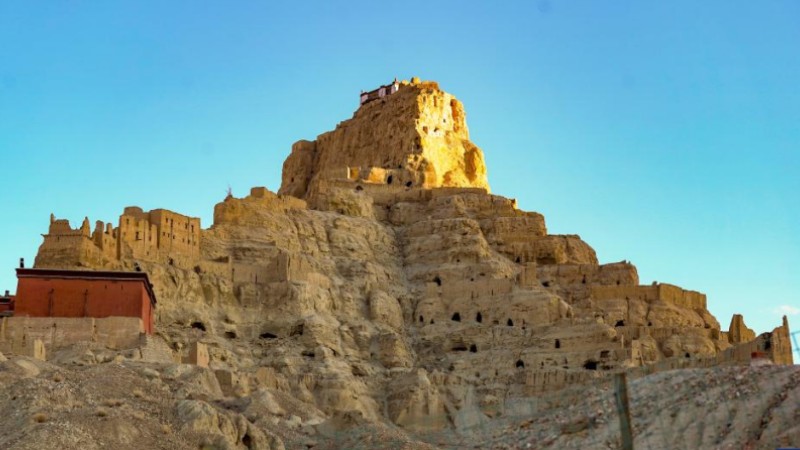UNESCO's Intangible Cultural Heritages in China (Ⅳ) (2)
Regong arts
Regong arts was inscribed on UNESCO's Representative List of the Intangible Cultural Heritage of Humanity in 2009.
In monasteries and villages along the Longwu River basin in Qinghai Province in western China, Buddhist monks and folk artists of the Tibetan and Tu ethnicity carry on the plastic arts of painting thangka and murals, crafting patchwork barbola and sculpting known collectively as the Regong arts.
Their influence extends to nearby provinces and beyond to South-East Asian countries.
Thangka, the art of painting religious scrolls used to venerate Buddha, uses a special brush to apply natural dyes to cloth prepared with patterns sketched in charcoal; barbola employs plant and animal forms cut from silk fabric to create soft relief art for veils and column ornaments; and wood, clay, stone or brick Regong sculpture decorates rafters, wall panels, tea tables and cabinets in both temples and homes.
 |  |
Photos
Related Stories
- Chicago Field Museum hosts Chinese Culture Day
- UNESCO's Intangible Cultural Heritages in China (Ⅲ)
- Feature: Chinese classical music resonates in ancient Swiss city
- Chinese culture exhibition held in Paris
- How China helps preserve cultural heritage sites in Asia
- Museum in NW China's Gansu uses latte art to give more people a taste of culture
- Chinese culture courses launched in Myanmar's Yangon
- Sound of replicas of Chime Bells of Marquis Yi of Zeng digitally preserved
- China encourages integrating intangible cultural heritage, tourism
- Digital technologies help revitalize ancient city wall in NW China
Copyright © 2023 People's Daily Online. All Rights Reserved.










